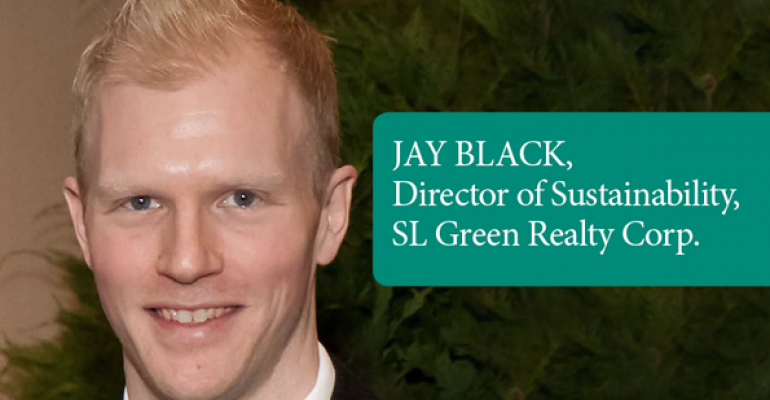To date, SL Green has completed sustainability projects saving more than $3.2 million annually—and we are just getting started. First, it was all about occupancy sensors and LED exit signs. Then tenant lighting introduced a new, sleek and modern fixture that delivers 40 percent greater efficiency, leading the way for the next major steps. In 2009, SL Green launched a 27-property lighting retrofit, replacing antiquated lighting technology to save $500,000 annually.
The lucrative potential of energy efficiency became evident, leading to growing support from the field and our executive teams. The year 2010 marked the next steps in establishing our HVAC retrofit program, addressing “low-hanging fruit opportunities” to reduce a building’s energy usage by as much as 19 percent, while SL Green’s operations team introduced a state-of-the-art real time energy management system throughout the New York City portfolio.
This new Web-based platform delivered effective demand response and Web-based energy-optimization tools that improved performance by more than $1 million annually. In 2011, we introduced renewable energy, installing a 100-kW solar panel system on a Connecticut property; 2012 culminated in a 21-property retrofit installing cutting-edge LED lighting technology to save $850,000 annually.
The timeline of our evolutionary model is strikingly simple, depicting a well-planned strategic outline that’s been deliberately stripped of complexities and challenges faced, to expose SL Green’s core approach to sustainability. Start small, and build sophistication over time.
But is this sustainability model unique to SL Green and other similar large real estate organizations that are committed to strong corporate and social responsibilities? No. Every company is capable of utilizing sustainability as a key business tool. Sustainability offers a blank canvas to establish new opportunities, whether it is to improve efficiency, tenant experience or favorability in the industry. But the quality and longevity of that success will be determined by the means of its development. Yes, sustainability programs make business sense, but while economics will continue to provide compelling arguments for ongoing development of sustainability programs, the successful establishment of a program depends on one critical component: behavior.
Sustainability requires an adjustment to the way we do things and how we think about business. Rightfully, in order to drive long-term success, it requires a slow and progressive modification of our behavior. If we bend a stick too quickly, it breaks. However, through a long-term approach, establishing stepping stones, allowing behavior to acclimate, each new project can be introduced successfully, becoming more complex over time.
In 2007, SL Green was aware of the developing efficiency opportunities, but utilized small improvements such as use of LED exit signs and occupancy sensors to incrementally foster our first steps; subsequently, as behavior shifted, it set the stage for new and more complex opportunities to be introduced. SL Green didn’t need to jump in head first or even feet first. We tested the water to begin an evolutionary approach to sustainability.
—Jay Black is the Director of Sustainability at SL Green Realty in New York City, and is a member of NREI's Sustainability Board of Advisors.

